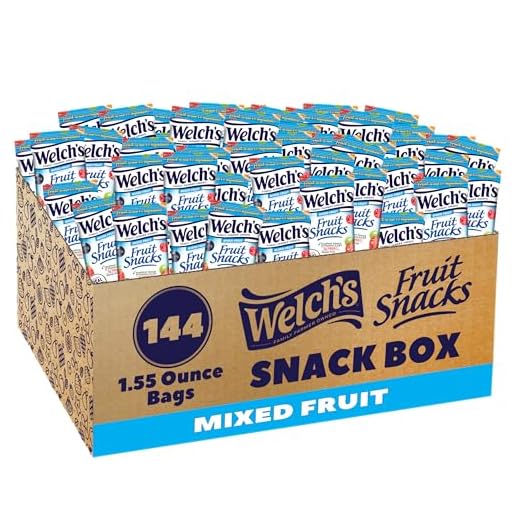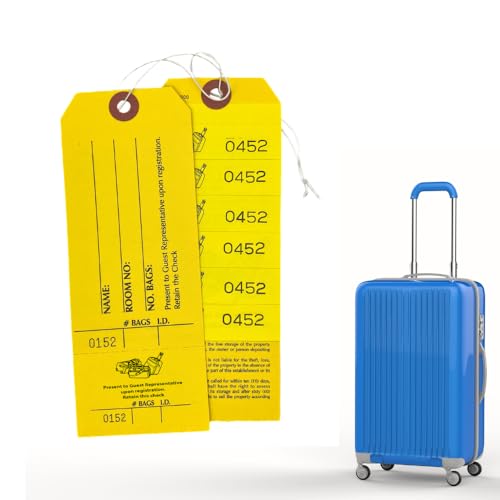



Security checkpoint rules: TSA and most EU screening agencies permit solid food items inside cabin baggage. Liquids rule (100 ml/3.4 oz) applies to gels, sauces, fruit purees; whole fresh berries count as solid items and usually pass X‑ray screening without additional restrictions.
Customs and plant‑health limits: US Customs and Border Protection plus USDA APHIS require declaration of all agricultural items for incoming travelers; undeclared fresh produce will be seized and may trigger fines. Many countries in EU impose restrictions on fruit from non‑EU origins. Australia and New Zealand enforce near‑zero tolerance for overseas fresh fruit; confiscation and on‑spot fines are common.
Practical recommendations: Store bunches inside a clear resealable bag and keep separate from meat, dairy, seeds. Place bag near top of cabin bag for easy access during screening and for quick declaration at border. For strict destinations, consume produce before arrival or discard at departure airport to avoid penalties. For checked transport expect crushing and rapid spoilage; use rigid container or choose refrigerated options when available.
Onboard fruit policy: quick recommendation
Recommendation: For international itineraries, place small vine fruit inside checked baggage; for domestic US flights, pack inside clear resealable bags and present separately during security screening.
TSA permits fresh produce inside cabin on domestic routes, but all items must pass X-ray and may receive manual inspection for organic material.
USDA and CBP restrict importation of fresh produce into US from many countries; failure to declare can trigger fines up to $500 plus confiscation.
- Quantity: No federal limit for personal servings on domestic flights; avoid commercial quantities when entering foreign borders.
- Packing: Rinse, pat dry, store in resealable plastic bag or rigid container; use insulated personal cooler with frozen gel packs (must remain solid during screening) for longer transit.
- Screening tip: Place container with produce in separate bin at security checkpoint to speed inspection and reduce bag handling.
- International travel: Verify destination agricultural rules via official customs or embassy websites and declare all fresh items on arrival forms.
- Alternatives: Dried fruit, canned fruit, purees and baby food typically meet cabin screening limits; gels and liquids must follow 100 ml/3.4 oz rule for cabin items.
- Airline policy: Check carrier rules for onboard food and open-container restrictions prior to departure.
For compact insulated bags and stylish personal organizers consult best luggage travel bags women for model ideas suitable for fruit transport.
U.S. TSA rules for fresh clusters in cabin bag
Pack fresh clusters inside a rigid, resealable container and place that container near top of cabin bag for X-ray screening; present it separately if TSA officers request additional inspection.
TSA permits solid food items in cabin bag; avoid bringing sauces, dips or preserved fruit in containers larger than 3.4 oz (100 ml) since those fall under 3-1-1 liquid/gel limits and must fit inside a single quart-sized clear bag.
Use frozen gel packs only if fully solid at screening; partially thawed or slushy packs may be treated as liquids and subject to 3-1-1 restrictions. Wrap clusters to prevent crushing and place an absorbent layer beneath to capture any juice.
Agricultural rules often override TSA screening: Hawaii and several U.S. territories enforce quarantine bans on certain fresh produce from mainland sources; undeclared items risk seizure and civil penalties. Check destination agricultural agency before travel.
On international segments, declare all fresh produce on arrival forms and confirm import permits or inspections required by destination country; failure to declare can cause confiscation, fines, or quarantine treatment. Also verify individual carrier policies regarding perishables and storage space prior to boarding.
Packing methods that speed up security screening for small clustered fruit
Pack small clustered fruit in a clear, rigid clamshell (PET) or a transparent resealable bag up to 1 quart (≈950 ml), single-layered, and place it in the outer compartment of your cabin bag for immediate visual/X‑ray recognition.
Container selection
- Use supermarket-style PET clamshells (vented) or quart-size zip-top bags; rigid clamshells hold shape on the X‑ray and reduce manual inspection.
- Avoid foil, opaque containers, vacuum-sealed pouches and soft opaque bags that collapse and create confusing X‑ray shadows.
- Seal containers but leave a small vent to prevent condensation; moisture blurring can trigger bag checks.
Packing technique
- Trim stems and remove loose debris; single pieces or a single thin layer scans more clearly than stacked clumps.
- Do not mix with electronics, chargers, batteries or metallic items; separate organic items from dense goods to reduce false positives.
- Place the container in an exterior pocket or topmost compartment so it can be slid directly into the screening bin without unpacking the whole bag.
- Attach a small printed label on the container face reading “fresh fruit” and weight (e.g., 300 g) to speed visual ID by officers.
- If traveling internationally, keep purchase receipts visible with the container to address agricultural or import questions quickly.
Checkpoint routine: remove the container first, place it alone in a bin or on top of a bin load, and keep hands free (no phone) to answer questions; a single, clearly presented container reduces likelihood of secondary screening.
Quantity and container limits for fresh fruit clusters on domestic flights
Limit fresh fruit clusters to 2–5 lb per passenger when traveling in cabin; larger amounts raise inspection likelihood and increase spoilage risk.
Recommended amounts
Federal security screening agencies impose no strict weight cap for solid foods, but practical limits apply: keep portions under 5 lb to reduce chance of extra inspection and to fit within typical personal-item or carry-on allowances. For day trips or short itineraries, 1–2 lb per person is usually sufficient.
Container and cooling guidance
Use clear, resealable plastic bags or hard, transparent produce containers sized 1–2 quarts for easy X-ray visibility and quick inspection. For checked bags, pack inside insulated boxes with frozen gel packs; ensure gel packs are fully solid at time of screening so they won’t be treated as liquids if inspected. If using syrup, brine, or vacuum marinades, place containers ≤3.4 oz (100 mL) inside a single quart-size clear bag to meet cabin liquid rules.
Interstate agricultural restrictions can prohibit fresh produce transport to destinations such as Hawaii, Guam, Puerto Rico; undeclared items risk seizure and fines. Check USDA and destination state agriculture agency websites before travel for up-to-date prohibitions and declaration requirements.
Airlines enforce checked-bag weight and size limits; keep produce containers within airline limits to avoid extra fees or forced repacking at gate. Label containers with destination and packing date to speed any necessary inspections.
International travel: customs and agricultural restrictions on vine fruit
Do not attempt to transport fresh vine fruit into Australia, New Zealand, United States, Canada, European Union member states without prior declaration and required documentation; undeclared consignments face seizure, destruction, quarantine hold, fines, and possible travel delays.
Country-specific restrictions and entry channels
Australia and New Zealand: most fresh produce from overseas is prohibited for passenger import unless importer holds valid import permit and consignments undergo approved treatment and inspection at origin; passengers must declare on arrival card; sealed commercial consignments may enter only via accredited import pathways.
United States: U.S. Customs and Border Protection and USDA APHIS require declaration of all plant products; many origins and varieties require phytosanitary certificate and pre-entry treatment; some small personal-use consignments may be inspected and allowed only after treatment or destruction.
European Union: non-EU fresh fruit imports require phytosanitary certificate issued by exporting countryʼs NPPO; commercial shipments must enter via designated border control posts with documentary and physical inspection; restricted lists vary by pest alerts and seasonal measures.
Canada: Canadian Food Inspection Agency enforces import permit and phytosanitary certificate requirements for many fruits; passengers must declare items on arrival; undeclared items subject to seizure and mitigation actions.
Practical compliance steps for travellers
Before booking, consult destination government plant health pages and airline policy for passenger imports; for commercial movement contact local NPPO for export certificate and check import permit requirements for intended destination.
On departure, retain origin details: grower name, country and region of production, harvest date, packaging lot numbers, and any treatment certificates; pack documentation separate and accessible for inspection at arrival.
On arrival, declare plant products on arrival card or digital declaration, present items and paperwork at inspection area, accept official disposal or approved treatment if consignment fails inspection; refusal to declare increases likelihood of penalty.
For consignments requiring cold chain, verify refrigeration unit condition before transit and keep maintenance records; for hands-on guidance consult replacing an air conditioner compressor step by step guide.
For passenger comfort during potential inspection delays or inclement weather, carry compact rain protection such as best folding rain umbrellas.
Transit and connecting flights: moving vine fruit between jurisdictions
Recommendation: For international connections, keep fresh vine fruit inside unopened commercial packaging, retain purchase receipt, and verify entry-point biosecurity rules prior to departure.
US Customs and Border Protection (CBP) requires declaration of all agricultural items on Form 6059B; undeclared fresh produce may be seized and civil penalties applied. When itinerary requires passport control at first foreign port, expect inspection by agriculture officers and possible mandatory disposal of prohibited items.
Australia and New Zealand apply near-zero tolerance for any fresh fruit arriving from overseas. If arrival involves immigration or baggage collection, remove prohibited items before entry or use airport biosecurity disposal bins on arrival; detected violations can trigger fines and prosecution under national biosecurity laws.
European Union internal transfers usually permit small quantities of personal fresh produce when origin is within EU. For items originating outside EU, some member states require phytosanitary certificate or will refuse entry; always consult destination customs and plant-health websites for country-specific lists.
When itinerary includes an international-to-international transfer that remains airside (no passport control), risk of seizure is minimal provided fruit remains sealed and packaging intact. If itinerary forces passengers through immigration and baggage claim at intermediate airport, plan for customs clearance time and possible disposal.
| Transit scenario | Required action | Risk level |
|---|---|---|
| Airside international-to-international transfer (no passport control) | Keep items sealed in original commercial packaging; retain receipt; present to transfer staff if requested | Low |
| Connection requiring immigration and baggage reclaim | Declare agricultural items on arrival card; surrender prohibited items to biosecurity officers or dispose in designated bins | High |
| Transit via Australia or New Zealand (any entry through passport control) | Avoid bringing fresh fruit into airport; dispose prior to arrival or in-flight waste receptacle; check airline for disposal guidance | Very high |
| Domestic connection after international arrival | Comply with national phytosanitary rules; declare items if required; allow 90–120 minutes extra for clearance and recheck | Medium |
Practical tips: purchase pre-packaged commercial product with country-of-origin labeling; keep receipts accessible; consume allowable portions before arrival at strict-jurisdiction hubs; if doubt exists, send items home via approved courier with quarantine clearance or discard prior to immigration checkpoint.
Safe alternatives when fresh vine-fruit prohibited
Choose commercially sealed dried fruit packs (raisins, sultanas, currants) instead of fresh vine-fruit.
Best portable options
Raisins and sultanas in individual foil pouches; freeze-dried fruit pieces in single-serve bags; fruit leather strips in tamper-evident wrappers; shelf-stable fruit cups in juice or light syrup (unopened); small jars of jam, marmalade, preserves commercially sealed; vacuum-packed purée squeeze pouches; mixed nut and dried-fruit snack packs; dried fruit and seed bars.
Shelf life guidance: dried fruit unopened 6–12 months; freeze-dried commercial packs 12–24 months; canned fruit 2–5 years; jam/jelly unopened 12–24 months. Refrigerate after opening when label indicates.
Keep original packaging with barcode, ingredient list, production or best-by date; retain purchase receipt; choose products labeled pasteurized or commercially sealed to reduce risk of agricultural rejection; for international segments prefer UHT-packed juice or shelf-stable purées in sealed cartons.








